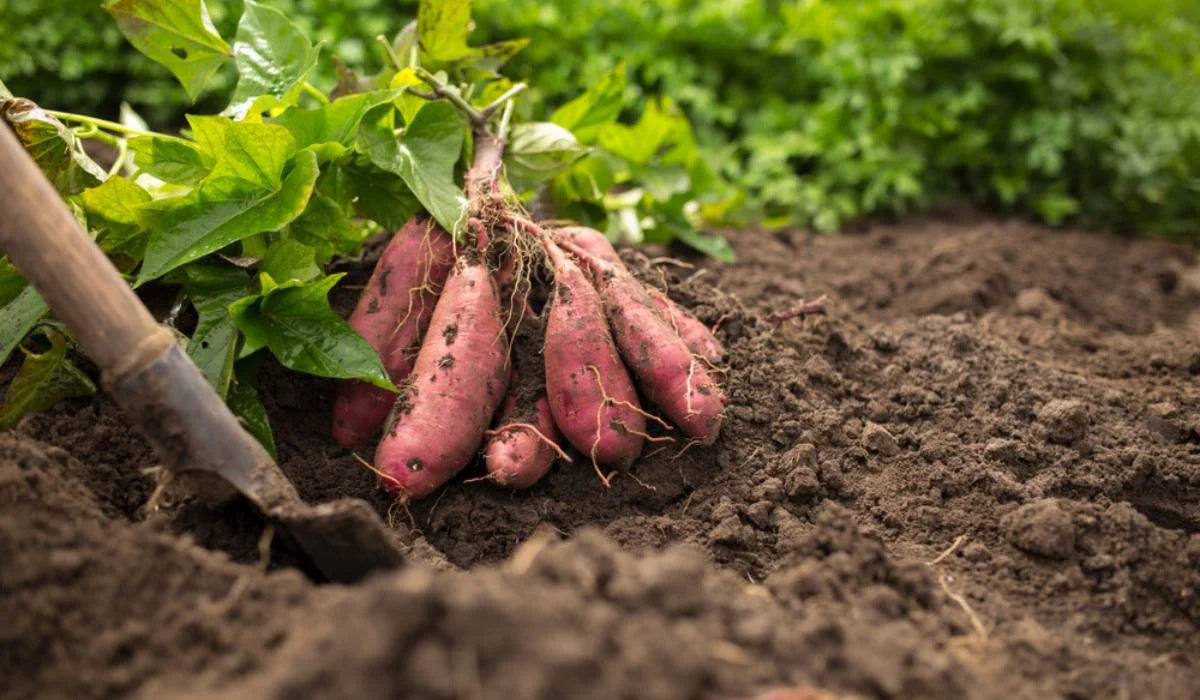905-892-5832
Hours: Mon-Sat 9am-5pm
Closed Sunday

How to grow Sweet Potatoes
So you’ve grown potatoes and you’re ready to try your hand at sweet potatoes? Well, read on, because the process is actually a little bit different! With potatoes, you’ll be planting a seed potato, or even just half of or smaller parts of the potato where they eyes have started to sprout. The eyes will become the shoot and leaves of the plant and the roots will grow out of the seed potato itself. Potatoes are part of the nightshade family, just like tomatoes, eggplant, peppers and okra. But, sweet potatoes are a vine and belong to the morning glory family! This means that the growing/planting process is slightly different. Don’t plant a whole sweet potato in the ground, as it will rot before it grows. Let’s take a look at how to grow Sweet Potatoes!
Sweet Potatoes will also begin to sprout, but usually from one end of the potato, and in one singular direction. These sprouts will begin to develop both a shoot with leaves as well as roots at the bottom of the stem. This entire plant, from root to leaf is going to form your starter plant, called a slip. When they begin to take root and shoot up, you can simply remove the slip from the potato by pulling it off with your hands. If they are not yet rooted, just put them in a container of water for a few days/weeks to grow those roots out first. This means you won’t be planting the entire potato, but just the new plant instead. A pre-planted sweet potato slip (or sweet potato start) will be the simplest method for growing sweet potatoes at home! You can purchase slips from local farmers, backyard growers or greenhouses or you can start your own! We currently have rooted sweet potato slips in 1 gallon pots here at Rice Rd Greenhouses! Come on down and take a look if you’re wanting to add them to your backyard garden this year! We have pots with a single stem as well as pots with 3 slips in them. Choose what is best for you! If you’re going to be planting the 3-stem sweet potato slips, make sure to separate them first. Sweet potatoes take 110 days to produce a harvest. Ours here at the greenhouse were planted on June 1st, so you would be looking at a mid-September harvest.
Sweet potato slips can be buried fairly deep into the soil for support, but do not need a lot of soil around the stem like a potato would. You do not need to hill or mound the dirt around your sweet potatoes, as the vines will grow along the ground. As the season progresses, you’ll notice a beautiful morning glory type of flower that comes before the fruit of the sweet potato vine. This plant is in the same family as the ornamental potato vine that is popular in decorative planters in the annual section of most garden centres. But, you probably won’t want to eat the tubers from those plants. They are technically edible, but they aren’t very tasty! You’ll want to grow your sweet potato slips from a delicious variety of sweet potato. If you’re going to be growing your own slips at home, make sure to choose an organic sweet potato, as they are more likely to produce fruit. Non-organic sweet potatoes have not been grown for reproduction, but for large fruit and easy harvest. Sweet potatoes are planted in the spring. They are slow-growing and require warm temperatures to develop full-size tubers. You can usually get three to five tubers per plant and more if you're in a warmer climate. They can be grown in full sun to part shade, and they prefer a well-drained or even sandy soil. They prefer a more acidic soil and can be grown well with other acid loving vegetables. Some of the best companion plants for sweet potatoes include beans, marigolds, nasturtiums, alyssum, yarrow, and spinach. Avoid planting squashes, tomatoes, and sunflowers near your sweet potatoes!
The slips themselves may not look like the luxurious plant that you are expecting, but I promise, that’s what makes the best sweet potatoes! They might start out a little rough looking, but this is to be expected. In fact, a local grower told us that the worse they look, the better they are! Don’t be tempted to over water or over fertilize to make the plants look better. You gotta trust the process and they will green up soon enough!
Want to try them out, come on down and chat with us at Rice Road Greenhouses and purchase your own sweet potato starts today!
